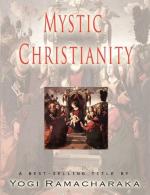What manner of people were these to whom He had decided to deliver the Message of Life? And, sighing deeply, He passed from the house, and returned to His camp.
THE FIFTH LESSON.
THE FOUNDATION OF THE WORK.
There is but an imperfect record in the Gospels of the first year of Jesus’ ministry among the Jews. Theologians have spoken of it as the “Year of Obscurity,” but the Occult traditions speak of it as a most important year of His ministry, for in it He laid firm foundations for His future work.
He travelled all over the country, establishing little circles of disciples and centres of interest. In cities, towns, villages and hamlets, He left behind Him little bands of faithful students who kept alive the flame of Truth, which steadily kindled the lamps of others who were attracted by the light. Always among the humblest He labored, seemingly impressed with the idea that the work must be begun on the lowest rounds of society’s ladder. But after a while a few of the more pretentious people began to attend the meetings, often brought there by curiosity. They came to smile and be amused, but many were impressed and remained to pray. The leaven had been well mixed in the loaf of Jewish society and it was beginning to work.
Once more the season of the Feast of the Passover arrived and found Jesus with His followers in Jerusalem and in the Temple. What memories the scene awakened in His mind. He could see the same scenes in which He had participated seventeen years before. Once more He saw the pitiful slaughter of the innocent lambs, and witnessed the flow of the sacrificed blood over the altars and the stones of the floor of the courts. Once more He saw the senseless mummery of the priestly ceremonies, which seemed more pitiful than ever to His developed mind. He knew that His vision had shown that He was to be slaughtered even as the sacrificial lambs, and there arose in His mind that comparison which stayed with Him ever after—that picture of Himself as the Lamb sacrificed on the Altar of Humanity. As pure as was this figure in His mind, it seems pitiful that in the centuries to come His followers would fall into the error (as equally cruel as that of the Hebrews) of imagining that His death was a sacrifice demanded by a cruel Deity to satisfy the Divine Wrath which had been kindled by the sight of Man’s shortcomings and sins. The barbarous conception of a wrathful God whose anger against His people could be appeased only by the bloody slaughter of innocent creatures, is fully equalled by the theological dogmas that the same Divine Wrath could be, and was, appeased by the blood of Jesus, the Master who had come to deliver the Message of Truth. Such a conception is worthy of only the most barbarous and primitive minds. And yet it has been preached and taught for centuries—in the very name of Jesus Himself—and men have




